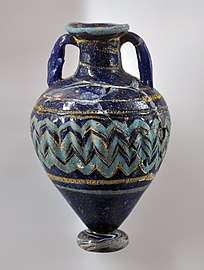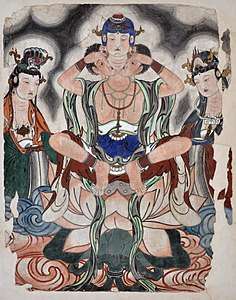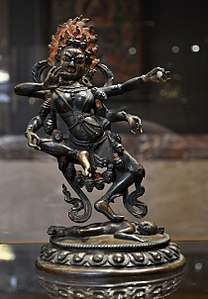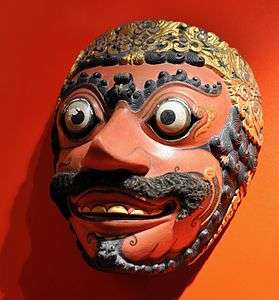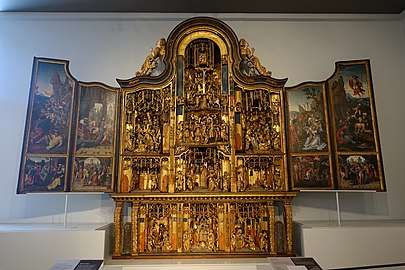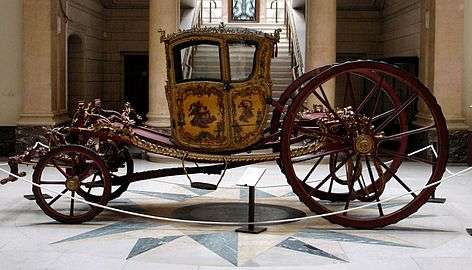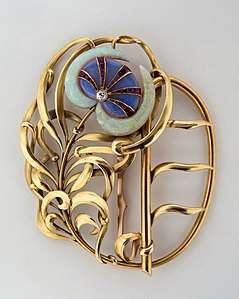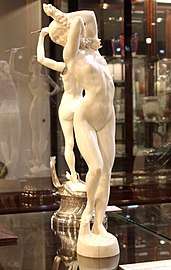Art & History Museum
The Art & History Museum (French: Musée Art & Histoire, Dutch: Museum Kunst & Geschiedenis) is a public museum in Brussels, Belgium, which is one of the constituents of the Royal Museums for Art and History (RMAH). It is located in the Cinquantenaire Park and was previously called the Cinquantenaire Museum (French: Musée du Cinquantenaire, Dutch: Jubelpark Museum).[1] It is one of the largest museums in Europe.
.jpg) The museum, pictured in 2010 | |
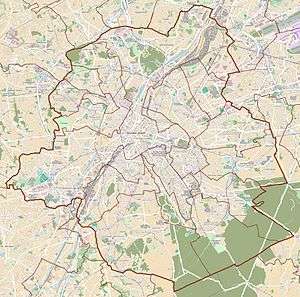 Location within Brussels | |
| Former name | Musée du Cinquantenaire / Jubelpark Museum |
|---|---|
| Location | Cinquantenaire Park 10 Brussels B-1000 Belgium |
| Coordinates | 50.83903°N 4.39187°E |
| Type | Art, ethnology, history |
| Public transit access | Schuman and Merode |
| Website | Official website |
History
The museum's first collections were assembled during the reigns of the Dukes of Burgundy and subsequently the Habsburg archdukes, and were placed in various locations in Brussels, their capital. In 1847, the newly formed Kingdom of Belgium acquired the artworks which were placed in the Halle Gate under the name of Musée royal d'Armures, d'Antiquités et d'Ethnologie ("Royal Museum of Armour, Antiquities and Ethnology"). By 1889, the gate had became to small and the collections were relocated to the Cinquantenaire Park (except for the armour and weapons which still remain in the gate). The Cinquantenaire used to be a military training facility until the 1880 National Exhibition when the large iron, glass and steel Cinquantenaire Palace was built with a military museum in the north wing.[2]
During the interwar period, the collections grew considerably due to Belgian scientific expeditions around the world most notably in Apamea (Syria), in Egypt by the Egyptologist Jean Capart, and in Easter Island in 1936, or by excavations in archaeological sites accross Belgium. Many wealthy Belgians also donated artworks to the museum. In the mid-20th century, a new wing was built in the west of the building to house the classical antiquity collections.[2]
The museum was called the Cinquantenaire Museum but changed its name to the Art & History Museum in 2018.[1]
Collection
The Art & History Museum's collections are divided into four parts:
- National archaeology
- Classical antiquity
- Non-European civilisations
- European decorative arts
National archaeology
The museum has a large collection of national archaeological pieces dating from prehistory, the Gallo-Roman period, to the Merovingian period (c. 751 AD).
Prehistory
The Prehistory room presents the vestiges of cultures and civilisations attested in what is now Belgium from the Paleolithic to the Iron Age. Tools, vases and jewellery are put back into context thanks to models and reconstructions which allow visitors to get an idea of the evolution of daily life during those different periods.
Gallo-Roman Belgium
The conquest of Gaul by Caesar (c. 58–50 BC) marked the beginning of a new era for Belgium. The development of craftsmanship is confirmed by the richness and diversity of artefacts dating from that period: ceramic dishes, fibulae, bronze figurines, as well as glass, bronze and silver containers, the most refined examples of which come from rich funerary furniture. The reconstructions of a Roman villa facade, a heating system, and even a painted wall decor, embody the Gallo-Roman culture.
Merovingian civilisation
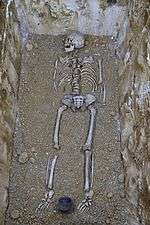
The Merovingian civilisation is known to us mainly through the worship of the dead. In this context, eight tombs are reconstructed in the room presenting this period. Furniture from other graves is distributed in themed display cases where visitors can admire jewellery, belt buckles and other fibulae.
Classical antiquity
The museum's collection houses early art from the ancient Middle-Eastern, Egyptian, Greek and Roman civilisations.
Middle East
The Middle East, one of the cradles of civilisation, is presented through reliefs, jewellery and many earthen objects dating from prehistoric times to the dawn of the Islamic period (c. 610 AD). The cylinder-seals, personal seals and Luristan bronzes make up some of the highlights of the collection.
.jpg) Female figurine, Halaf period, northern Syria, c. 5500 BC
Female figurine, Halaf period, northern Syria, c. 5500 BC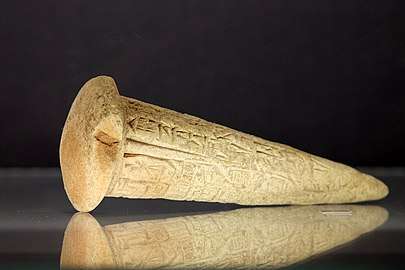
.jpg)
Egypt
The Egyptian collection comprises more than 11,000 pieces, offering a wide view of Egyptian art, from its origins to the Christian era. The most striking works are the Lady of Brussels, the relief of Queen Tiyi (c. 1398–1338 BC), and the colossal head of a pharaoh from the Ptolemaic era (c. 323–30 BC). A mastaba, mummies and their sarcophagi illustrate the funeral customs of the ancient Egyptians.
Greece
The collection of vases is the highlight of the Greek section. The forms, styles, decorations, and workshops are presented in all their diversity, from the Bronze Age to the Hellenistic period (c. 323–31 BC).
Rome
The Roman collections revolve around a few important works, namely remarkable Etruscan mirrors, as well as marble busts from the Imperial period. Many important and impressive remains from Apamea, Syria, including part of the Great Colonnade and outstanding mosaic floors are on view, such as a hunting scene from the palace of the governor of the province of Syria Secunda. The world famous bronze statue of Emperor Septimus Severus is found in the Apamea hall. The Roman collection also includes a large scale model of the city of Rome during the 4th century AD by the French architect Paul Bigot.
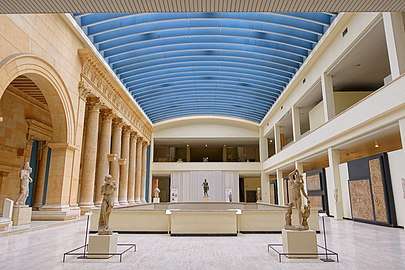 View of the classical antiquity collection
View of the classical antiquity collection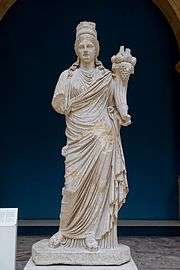 Marble sculpture of Tyche, first half of the 2nd century AD, unknown provenance
Marble sculpture of Tyche, first half of the 2nd century AD, unknown provenance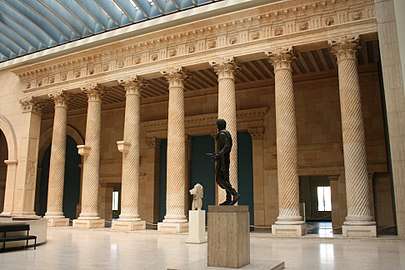 Great Colonnade from Apamea (Syria) with statue of Septimus Severus in front
Great Colonnade from Apamea (Syria) with statue of Septimus Severus in front Roman mosaic from Apamea depicting a hunting scene, 5th century AD
Roman mosaic from Apamea depicting a hunting scene, 5th century AD- Model of Rome by Paul Bigot, 20th century
Byzantine and Oriental Christian arts
The Byzantine and Christian arts of the East are represented by icons, an episcopal chair, silks, Coptic textiles and ceramics from both Byzantium and Greece, as well as Eastern Europe, the Near East, Russia, Egypt, and Ethiopia.
Non-European civilisations
This section showcases the important collections of artefacts from Asian countries, such as China, Japan, Korea, Southeast Asia, as well as the Americas (showing pre-Columbian civilisations and contemporary societies), Oceania (particularly Easter Island) and the Islamic world.
Islamic art
The diversity of peoples and cultures that make up the Islamic world is reflected in works from Spain (Al-Andalus), North Africa, the Near and Middle East, and India. These testimonies, among which textiles and ceramics are the best represented artistic disciplines, span from the 8th to the 20th centuries.
 View of the Islamic art collection
View of the Islamic art collection Glazed ceramic plate, Hispano-Moresque ware, Valencia (Spain), first half of the 15th century
Glazed ceramic plate, Hispano-Moresque ware, Valencia (Spain), first half of the 15th century Holy knights glazed ceramic plate, Kütahya (Turkey), c. 1718–1719
Holy knights glazed ceramic plate, Kütahya (Turkey), c. 1718–1719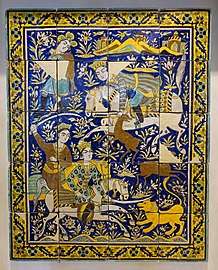 Glazed ceramic tile panel with hunting scene, Iran, c. 18th–19th century
Glazed ceramic tile panel with hunting scene, Iran, c. 18th–19th century
Asia
Works from China, Korea, India and Southeast Asia allow visitors to discover the secular and religious world of this vast continent with diverse cultures and religions. Vietnamese ceramics, Tibetan paintings, Khmer sculptures, Laos drums, delicate Chinese jades and an Indonesian puppet theatre are some examples.
Polynesia and Micronesia

The collections devoted to Polynesia and Micronesia bring together archaeological and ethnographic objects evoking daily life, weaving, the work of bark, stone, wood and bone. One of the centerpieces is undoubtedly the colossal sculpture of Pou Hakanononga, the god of tuna, brought back from Easter Island in 1935 by the Belgian training ship Mercator.
America
The museum holds the largest collection of Ancient American artifacts in Europe. Through 4000 years of history, from 2000 BC to the present day, statuettes, painted vases, jewellery revive the Inca, Mayan and Aztec civilisations. The ethnographic collections also make it possible to discover the feathered art of the native people of Amazonia (such as the famous Moctezuma coat ) and the first nations of North America, represented in particular by the impressive totem pole which welcomes visitors who enter these rooms.
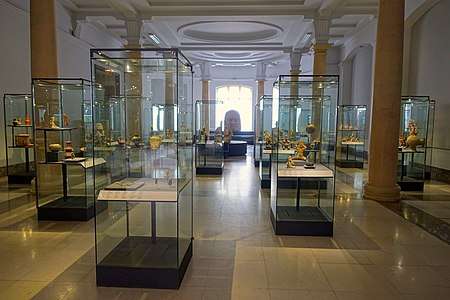 View of the American collection
View of the American collection
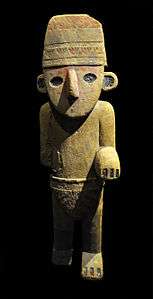 Offerings bearer wooden sculpture, Chimú culture, northern Peru, c. 1100–1470
Offerings bearer wooden sculpture, Chimú culture, northern Peru, c. 1100–1470
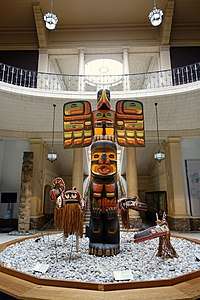 Native American totem pole
Native American totem pole
European decorative arts
This section is dedicated to the fine arts from the Middle Ages to the 20th century showing sculptures, furniture, ceramics, metals, and glassware. There is an important and large department of textiles including Flemish tapestries, costumes and dress, as well as needle lace and bobbin lace (parts from the royal collection). Horse-drawn vehicles, as well as photographic and cinematographic equipment, are also on display.
The Treasure room and Mosan art
The panorama of industrial arts opens with Mosan masterpieces of goldsmithery, presented in the Treasure room with the atmosphere of a medieval crypt. In the access corridor, stained glass windows and textiles from the same period are exposed.
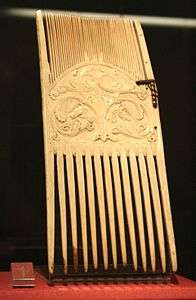
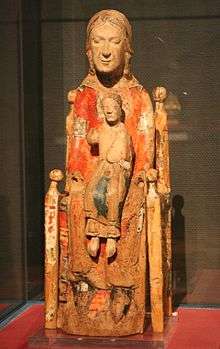 Virgin and child, Mosan art, 11th century
Virgin and child, Mosan art, 11th century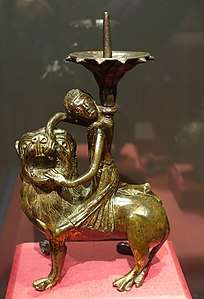

From the Gothic period to the Baroque period
A circuit around the Gothic cloister then leads visitors from the 13th to the 17th centuries, the golden age of the Southern Netherlands. In addition to sculptures, stained glass, ceramics, silverware, altarpieces and tapestries from the 15th and 16th centuries constitute, by their number and quality, a world famous collection.
From the Baroque period to the 20th century
Works dating from the 17th to the 20th centuries attest to the growing importance of secular art. This is the case with the collection of Antwerp cabinets, the music room and furniture from Liège . The highlight of this set is the reconstruction of the store designed by Victor Horta for Wolfers silversmiths, which serves as a backdrop for a splendid selection of Art Nouveau and Art Deco works. In the Cinquantenaire Park, a small pavilion is associated with these collections. Designed by Horta, it houses the bas-relief of the Human Passions, sculpted by Jef Lambeaux.
The rooms by subject
Other rooms group works of art by subject. One of the most important copperware sets preserved is housed in the chapel. Glassware, stained glass, tinware, precision instruments, and European ceramics complete the evolution of the arts of fire. The lace room communicates with that of textiles and costumes. Cinematic and photographic devices as well as horse-drawn vehicles complete this vast panorama. There is also the Heart Museum, a room presenting the collection of the cardiologist Boyadjian and made up of objects referring to the heart in all its forms.
See also
References
- "Le Musée du Cinquantenaire s'appelle désormais le Musée Art & Histoire". Le Vif. Belga. 9 May 2018. Retrieved 10 May 2018.
- "History | KMKG". www.kmkg-mrah.be. Retrieved 27 June 2020.
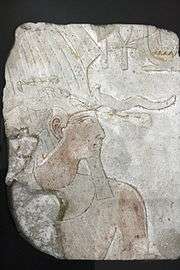
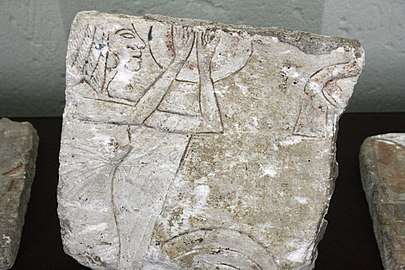
.jpg)
